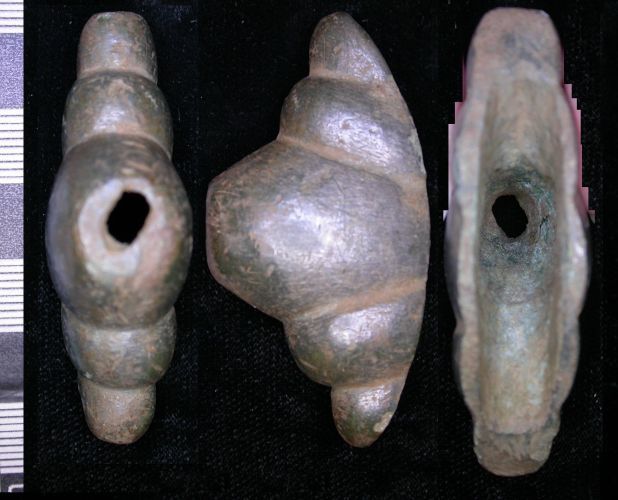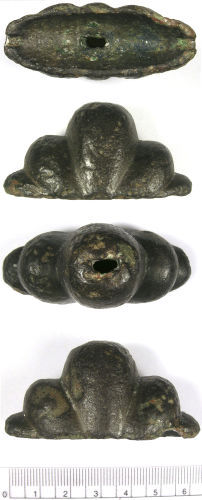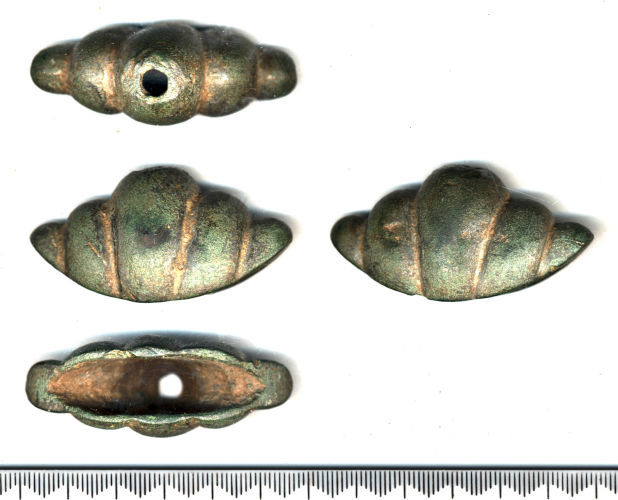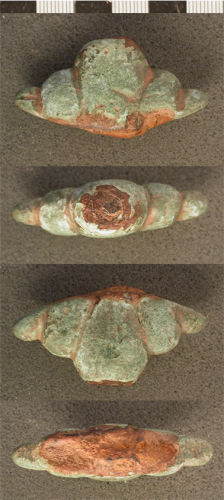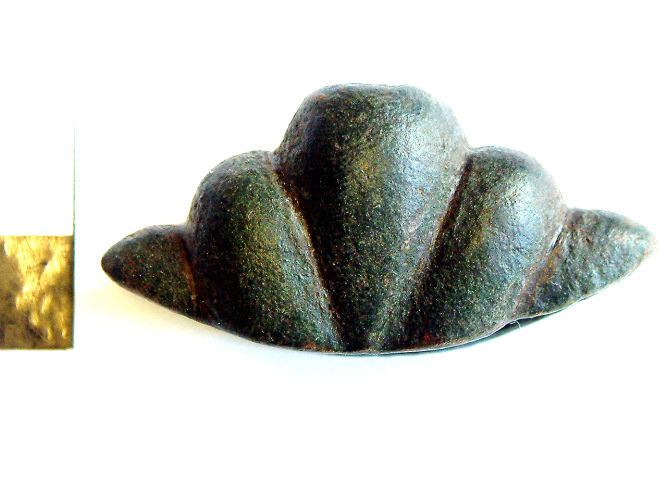Posts: 1,606 Location: Chicago, Illinois
Mon 06 Feb, 2012 9:58 pm
Question about Petersen type L pommels...
Posts: 136
Tue 07 Feb, 2012 12:22 am
Hello Tim!
You found quite a number of those!
My guess would be that it rested on iron upper guard. I was looking for bronze viking age sword furnitures several times and i found none of type L, except those loose pommels.
I GUESS, that iron is used for structural reasons and bronze for pommel as easier way to make them hollow and better surface for gilding
Have a great time
Petr
Posts: 118 Location: Reno, NV
Tue 07 Feb, 2012 8:29 am
There is a copper-alloy lower guard at the British Museum:
http://finds.org.uk/database/artefacts/record/id/55090
Posts: 136
Tue 07 Feb, 2012 8:33 am
Thanks for this one! very nice but probably from type O sword
Posts: 118 Location: Reno, NV
Tue 07 Feb, 2012 9:18 am
Just type L of course, sorry.
I'm sure I've seen quite a few type L hilts where the iron/steel upper and lower guards have survived without the pommel. In that instance could it have been organic? You're probably right, Petr, in that it would be easier to cast the complex pommel shape out of copper/bronze, whereas the upper and lower guards could just be forged into shape.
Posts: 506 Location: South Bend, IN
Wed 08 Feb, 2012 11:36 am
At one time I had better quality pics of this sword, but not sure anymore. Recall it being sold ten plus years ago on ebay.
Shane
 Attachment: 8.44 KB
Attachment: 8.44 KB
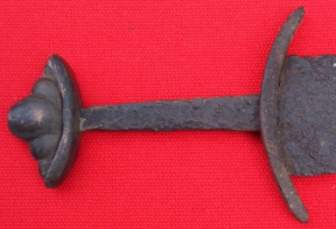
Posts: 1,606 Location: Chicago, Illinois
Wed 08 Feb, 2012 6:04 pm
| Shane Allee wrote: |
At one time I had better quality pics of this sword, but not sure anymore. Recall it being sold ten plus years ago on ebay.
Shane |
Nice one! Could you tell if the pommel was non ferrous and the rest of the hilt ferrous with the better quality pics?
Posts: 1,757 Location: Storvreta, Sweden
Thu 09 Feb, 2012 12:11 am
I cannot add anything about combinations of ferrous upper and lower guard and coper alloy pommel caps, but the type of sword that this kind of pommel cap comes from seems to me to be the Wallingford Bridge type. It is a type that was common in brittain at the time of the Danelag and seems to be a result of a mix of anglo saxon and norse styles (a mating of type L and type R and/orS). Significant for the Wallingford bridge type is the curved upper and lower guard, following the example of type L hilts, and the rounder outline of the pommel cap, as found on type R and S hilts (three or five lobed)
The famous "viking" sword from the River Witham is of this type.
Posts: 1,903 Location: Toronto
Thu 09 Feb, 2012 1:48 pm
Posts: 1,606 Location: Chicago, Illinois
Thu 09 Feb, 2012 7:53 pm
Great stuff JD. Thanks. At least there is one example of a ferrous guard with non ferrous pommel and pommel bar. The picture Shane posted is tought to tell. Interesting. I would imagine some would have been made with ferrous pommel bars and non ferrous pommels. Tough to tell with only a couple examples...
You
cannot post new topics in this forum
You
cannot reply to topics in this forum
You
cannot edit your posts in this forum
You
cannot delete your posts in this forum
You
cannot vote in polls in this forum
You
cannot attach files in this forum
You
can download files in this forum
